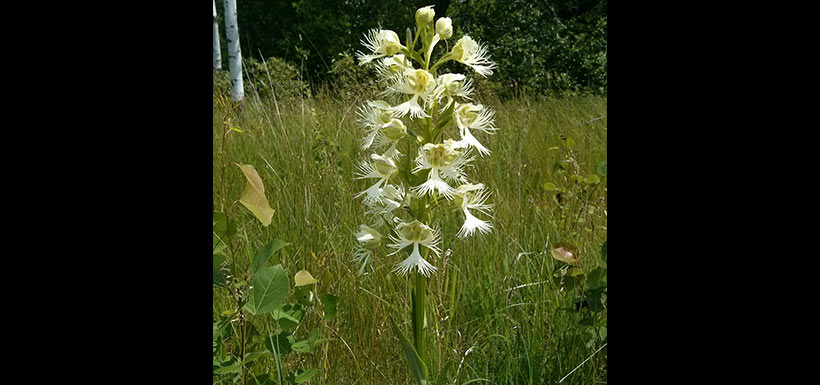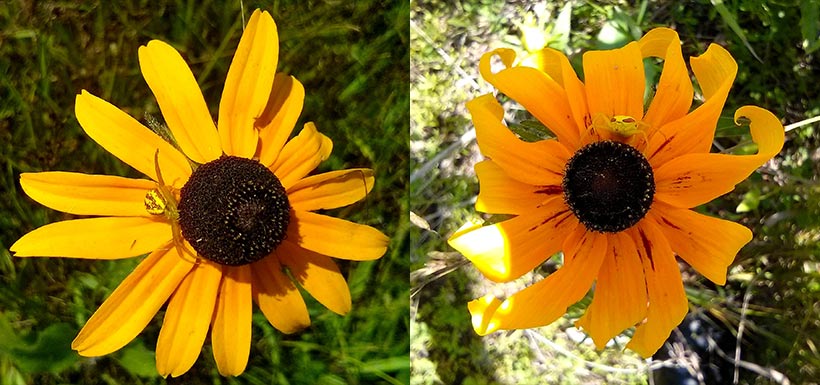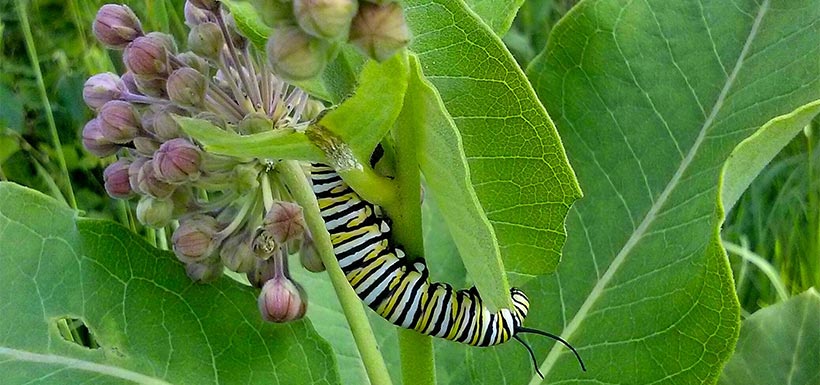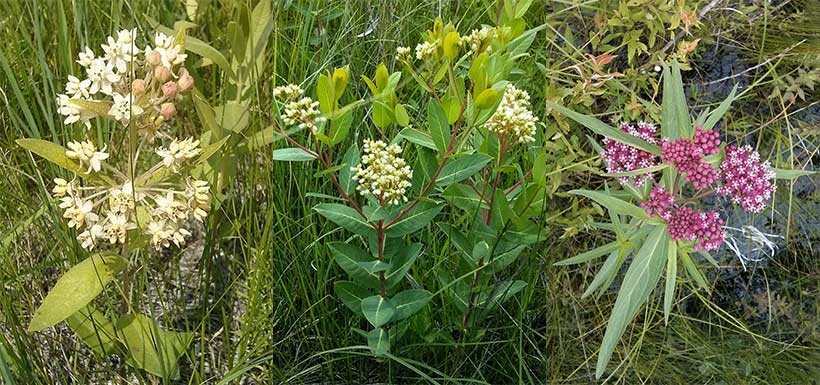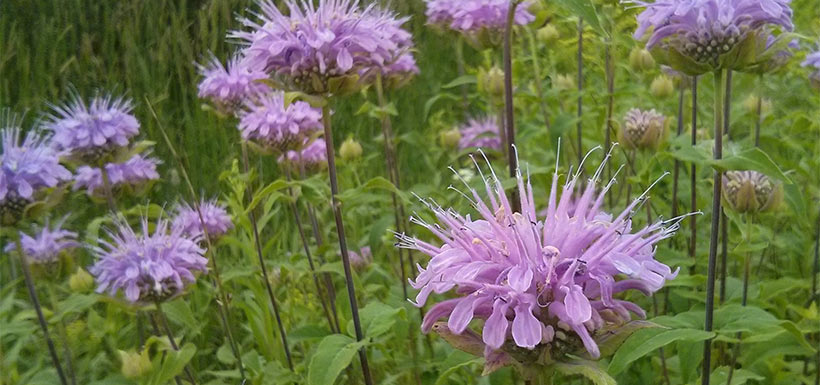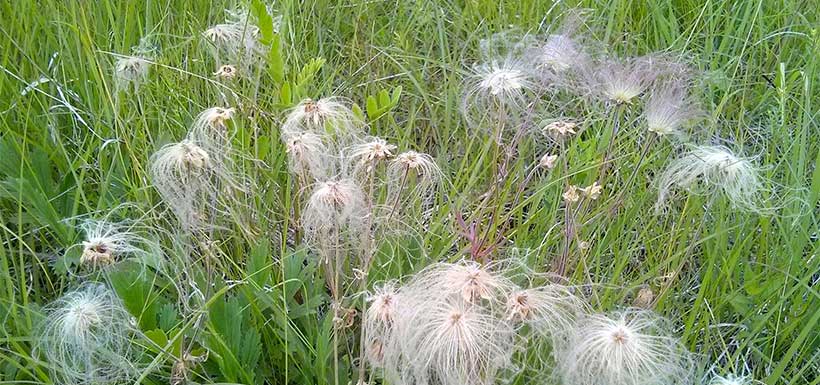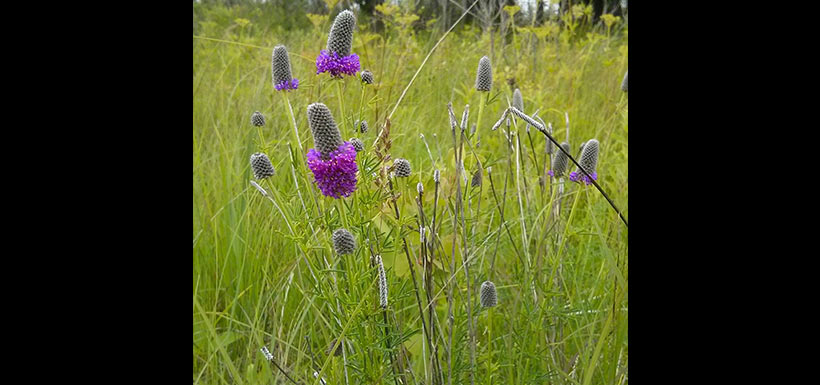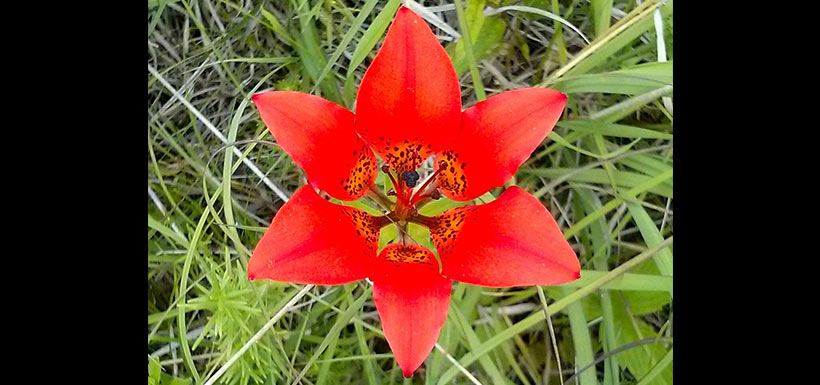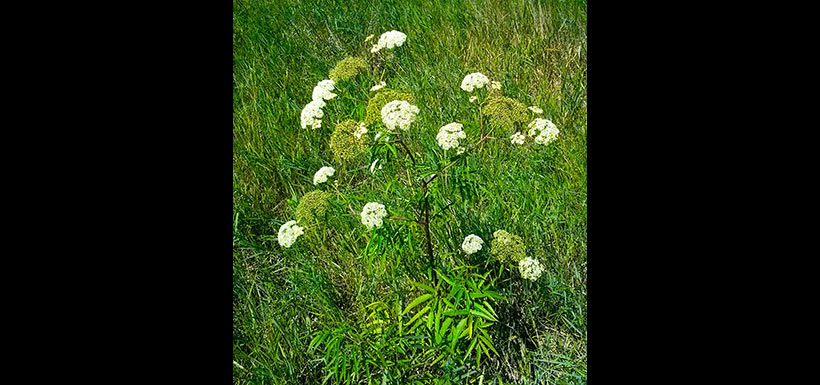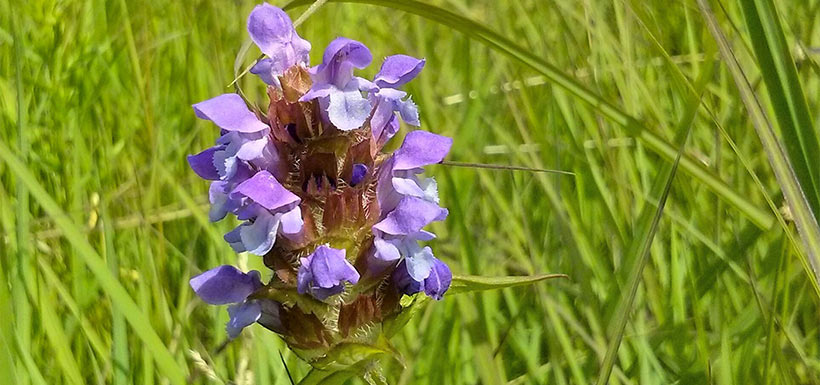Searching for skipperlings
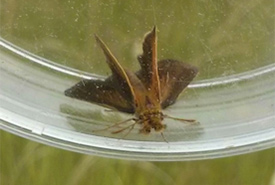
Poweshiek skipperling in Petri dish. (Photo by Monica Reed)
It started with a lesson on the swoop and the drop net – methods that I would soon use while searching for the elusive Poweshiek skipperling butterfly. If captured, a careful transfer from net to a Petri dish allows for the butterfly to be inspected and identified. As we practiced butterfly capture methodology on common species such as meadow fritillary, Dr. Richard Westwood, a lepidopterist at the University of Winnipeg, shared his expertise with contagious enthusiasm to the season’s Poweshiek survey teams. The Poweshiek skipperlings had not yet emerged, but according to his models, which use spring temperatures to predict the date that adult butterflies will emerge from their chrysalises, the Poweshiek skipperlings would be taking flight near June’s end. The wait was on.
Poweshiek skipperlings are endemic to the tall grass prairie, meaning they are not found anywhere else in the world. With less than half of one percent of the tall grass prairie remaining, Poweshieks are limited to the southeast corner of Manitoba, specifically the Tall Grass Prairie Natural Area (TGPNA), and a handful of sites in Michigan and Wisconsin. Diminishing Poweshiek populations have instigated their designation as “critically endangered” and have spurred a number of concerned groups into action.
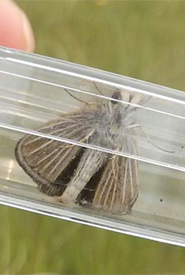
Holding something that is rarer than a panda bear evoked emotions that are hard to put into words! (Photo by Monica Reed)
Since 2006, field surveys have provided valuable information on the species’ population size as well as its habitat requirements, helping to inform land management decisions that might encourage the species' survival. Westwood and his team have surveyed sites where Poweshieks have been found previously, while NCC staff have focused their efforts on new areas of suitable habitat in hopes of discovering additional colonies. As NCC’s conservation science intern, I was fortunately given the opportunity to join Melissa Grantham and Jordan Becker, two NCC assistant conservation biologists, in this year’s search for the critically endangered skipperling.
A week after our training we received word of the Poweshieks’ emergence. We eagerly packed our field gear and drove to the TGPNA, which is less than an hour and a half from Winnipeg.
Before starting our official search for new colonies, we visited a location where Powesheiks were already known to occur. This would help us become familiar with the particular habitat on which these butterflies rely. To my good fortune, from the periphery of my vision came a tiny brown butterfly, skipping through the air in the characteristic flight pattern after which skippers are named.
With a swoop of my net, I trapped the delicate creature. After calling my field mates over, we transferred it into a Petri dish and confirmed it was a Poweshiek skipperling! Holding something that is rarer than the famously imperilled panda bear evoked emotions that are hard to put into words.
The time had come to branch out and survey new habitat. Despite the odds of success being quite low — only 44 Poweshieks had been detected in the 2014 surveys — my field mates and I still harboured hopes that we would find a previously undetected colony. For seven days I allowed the feeling of holding the Poweshiek skipperling to fuel my search.
Sadly, willing something to appear cannot cause it to materialize out of thin air. Although we didn’t find any new colonies, Westwood and his team counted a similar number of individuals in the known colonies to those counted last year, which was heartening.
The time spent pursuing Poweshieks afforded me an opportunity to learn about the tall grass prairie and its inhabitants. I was awed by the grassland’s diversity and attempted to capture a slice of the beauty in photographs. Here are a few of my favourites that will hopefully inspire you to check out the Manitoba Tall Grass Prairie Preserve for yourselves! – click photos for descriptions.

